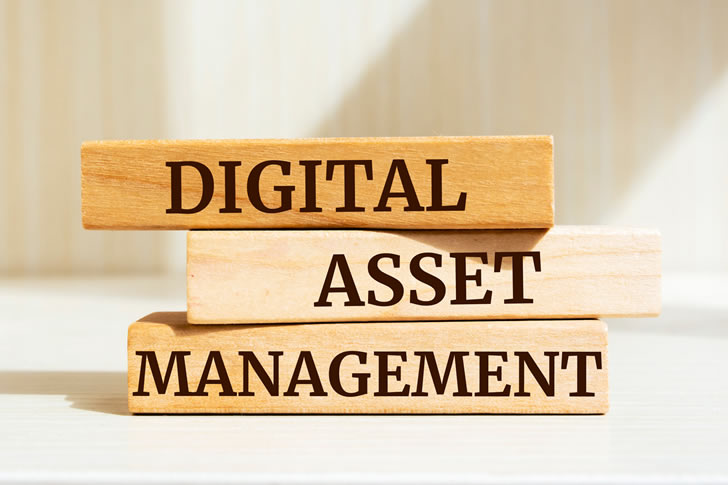Key Benefits of Implementing Digital Asset Management Systems
Digital Asset Management (DAM) systems are essential tools for businesses that handle large volumes of digital content. By providing a centralized repository for storing, organizing, and retrieving digital assets, DAM systems streamline workflows and enhance productivity.

What is Digital Asset Management?
Digital Asset Management involves the organization, storage, and retrieval of digital content, such as images, videos, documents, and multimedia files. Key components of a DAM system include:
- Centralized Repository: A single location for storing all digital assets.
- Metadata Management: Tagging and categorizing assets for easy search and retrieval.
- Access Control: Managing who can view and edit assets.
- Version Control: Keeping track of different versions of assets.
- Integration: Compatibility with other software systems and workflows.
Key Benefits of Digital Asset Management
- Improved Organization and Accessibility
- Centralizes all digital assets, making them easily accessible to authorized users.
- Enhances the ability to quickly find and use assets through metadata and search functionalities.
- Enhanced Collaboration
- Facilitates collaboration across teams by providing access to shared assets.
- Supports workflow automation, reducing bottlenecks and speeding up processes.
- Increased Efficiency
- Reduces time spent searching for and retrieving assets.
- Automates repetitive tasks, allowing employees to focus on more strategic activities.
- Cost Savings
- Minimizes the need for redundant assets and reduces storage costs.
- Lowers expenses related to asset loss and mismanagement.
- Brand Consistency
- Ensures that only approved and up-to-date assets are used in marketing and communications.
- Helps maintain a consistent brand image across all channels.
- Scalability
- Easily accommodates growing volumes of digital assets.
- Adapts to the changing needs of the business without significant reconfiguration.
- Rights Management
- Tracks usage rights and licenses, preventing unauthorized use of assets.
- Protects the company from potential legal issues related to asset misuse.
- Enhanced Security
- Provides secure storage and access controls to protect sensitive digital assets.
- Monitors and logs user activities to ensure compliance with security policies.
- Better Data Insights
- Offers analytics on asset usage and performance, informing strategic decisions.
- Helps in understanding which assets are most valuable and how they are utilized.
- Seamless Integration
- Integrates with other systems such as CMS, CRM, and marketing platforms.
- Enhances overall digital ecosystem efficiency by streamlining data flow.
Q&A: Understanding Digital Asset Management
Q: What is a Digital Asset Management system?
A: A DAM system is a centralized solution for storing, organizing, and managing digital assets such as images, videos, and documents, making them easily accessible and usable by authorized users.
Q: How can a DAM system benefit my business?
A: A DAM system improves organization, enhances collaboration, increases efficiency, reduces costs, and ensures brand consistency. It also provides robust security and helps manage rights and licenses for digital assets.
Q: Can a DAM system integrate with other business tools?
A: Yes, most DAM systems are designed to integrate seamlessly with other software platforms, including CMS, CRM, and marketing tools, enhancing overall workflow efficiency.
Q: How does a DAM system improve collaboration?
A: By providing a shared, centralized repository of assets, DAM systems facilitate easier access and sharing of digital content among team members, reducing delays and improving project timelines.
Q: What should I consider when choosing a DAM system?
A: Consider factors such as the system’s scalability, integration capabilities, user interface, security features, and the level of support provided by the vendor.
Chart: Examples and Features of Digital Asset Management Systems
| DAM System Name | Starting Price (Monthly) | Key Features | Specialization |
|---|---|---|---|
| Adobe Experience Manager | $500+ | Rich media management, AI-powered search | Enterprise-grade DAM |
| Bynder | $450 | Customizable workflows, brand guidelines | Brand Management |
| Widen Collective | $375 | Digital rights management, analytics | Enterprise & Marketing |
| Canto | $99 | Visual content library, cloud-based storage | SMBs and Enterprises |
| MediaValet | $300 | Secure cloud storage, AI-driven tagging | Enterprise Solutions |
| Brandfolder | $250 | Smart CDN, asset analytics | Marketing & Branding |
| Nuxeo | $400 | Open-source platform, flexible architecture | Customizable Solutions |
| Cloudinary | $99 | Media optimization, content delivery | Developers & Enterprises |
| Aprimo | $500+ | Marketing resource management, workflow automation | Marketing & IT |
| Asset Bank | $200 | User-friendly interface, extensive metadata support | SMBs and Nonprofits |
Professional Analysis
Adopting a Digital Asset Management system can transform the way businesses handle their digital content. The key benefits include:
- Streamlined Operations: By centralizing digital assets, DAM systems reduce the time and effort required to locate and use content, leading to more efficient workflows.
- Cost Efficiency: Effective management and reduction of redundant assets can result in significant cost savings, especially for large organizations with vast amounts of digital content.
- Enhanced Security and Compliance: DAM systems provide robust security features and ensure compliance with legal requirements regarding asset usage and rights.
- Scalable Solutions: DAM systems are scalable, accommodating the growing needs of businesses and adapting to various industries and business sizes.
Conclusion
Digital Asset Management is a powerful tool that offers numerous benefits for businesses handling large volumes of digital content. From improving efficiency and collaboration to ensuring brand consistency and security, DAM systems are indispensable for modern organizations. Investing in a DAM system can lead to significant improvements in how digital assets are managed and utilized, driving better business outcomes.
References
- Bynder: https://www.bynder.com/en/
- Widen Collective: https://www.widen.com/
- Canto: https://www.canto.com/







Recent Comments